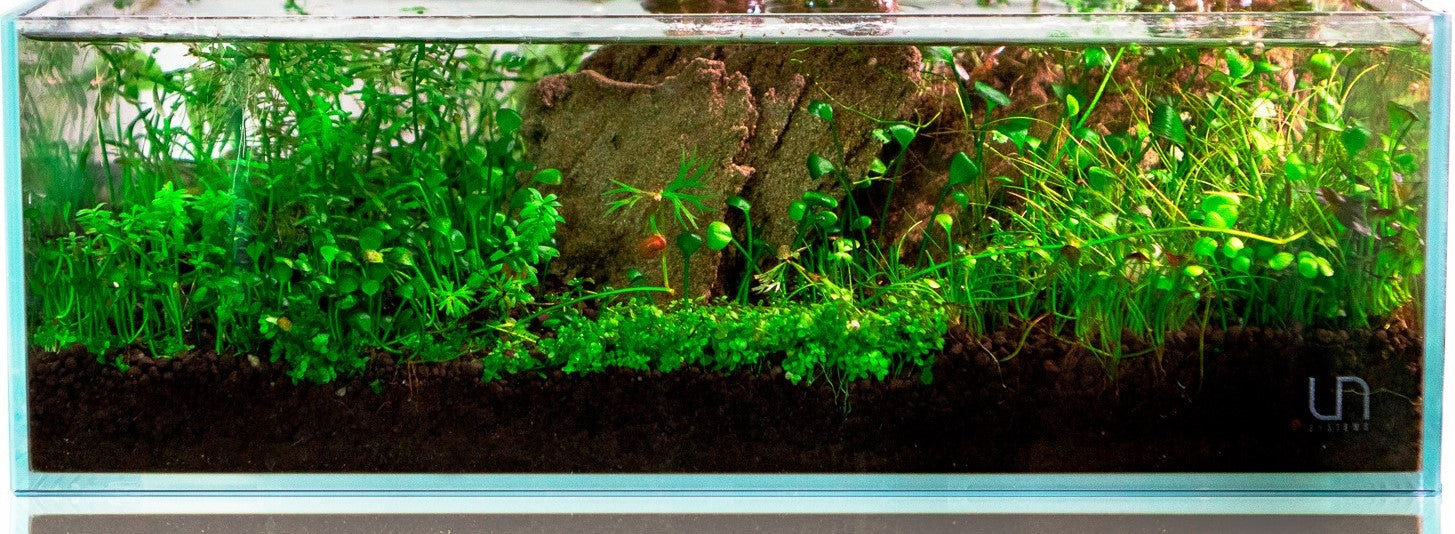
Planted Aquarium Substrate: Soil, Gravel, and Sand
Written by Tammy Law (@aquarist_tl) and Team Buce Plant
Thinking about starting a new aquarium and wondering which substrate is right for your setup? Or if you need any substrate at all? Every aquarium has their own style and unique layout. Some serve a more functional purpose while others are more for aesthetics.
This article will go over the benefits and disadvantages of bare-bottom tanks vs. tanks with substrate, as well as the pros and cons of the three main types of substrates used in the freshwater aquarium hobby: gravel, sand, and soil.
Bare-bottom vs. Substrate
A bare-bottom aquarium is simply an aquarium with no substrate. The biggest advantage to these types of aquariums is that they are super easy to clean. Maintenance could be as basic as just doing a water change.
Since there is no substrate for fish waste or uneaten food to get trapped in, the flow of the water can push the debris straight into the filter. If the aquarium has low flow, it’s easy to see the build-up of detritus on the bottom of the tank, which can be taken out with ease through a siphon.
Bare-bottom setups are ideal for breeding and quarantine tanks. A large part of maintaining a fish’s health is through the quality of the water, so being able to keep the aquarium as clean as possible is why many breeders choose to go with bare-bottom tanks.

A breeding/grow-out tank for black rams (mikrogeophagus ramirezi)
While bare-bottom aquariums are simple to set up and easy to maintain, they are arguably not as aesthetically pleasing to look at compared to an aquarium with substrate on the bottom. The bottom panel of the aquarium resembles a mirror underwater and reflects light back towards the top of the tank. This is generally unappealing to look at.
Adding substrate in the aquarium will give the tank a more natural look. Another advantage of using substrates is that they can act as a home for beneficial bacteria to grow on. These bacteria will help with the nitrogen cycle, converting toxic ammonia eventually into nitrates. Learn more about the importance of cycling your tank by clicking here. Tanks with no substrate lose a huge amount of potential surface area for these microorganisms to attach to.
Also, certain fish and other tankmates benefit from having a substrate in the aquarium. Bottom-feeders like Corydoras and loaches typically feel safer with soft substrates and love interacting with them. Furthermore, some soils are meant to create an ideal environment for shrimp by lowering the water’s PH.
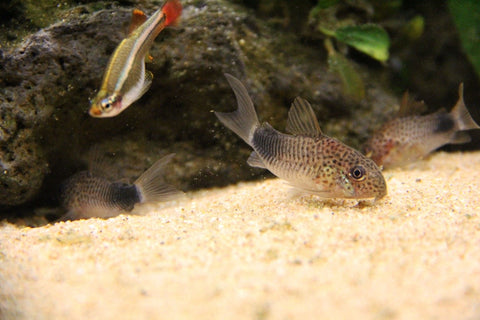
Corydoras similis digging through sand
- Disclosure: Before we go into the details of different aquarium substrates, it’s important we note that using an aquarium soil substrate in your planted tank is the key to a lush, beautiful scape. Artificially dyed gravel or sand have no nutrients for your plant’s roots to absorb! Even with the addition of root tabs, sand and gravel are simply not long-lasting options to keeping a healthy planted aquarium. You will see a night and day difference with the success of your plants.
Types of Aquarium Substrates
There exists so many different sizes, shapes, and colors of substrates to choose from for your planted aquarium, but most fall under three types: gravel, sand, and soil. This section will go over each of their strengths and weaknesses.
Gravel
Gravel consists of stones that range from tiny pebbles to small river stones. It can even be a mix of many different sizes and types of rocks.
Gravel is usually the substrate that many first-time aquarists choose because it’s inexpensive and comes in a variety of styles. Some hobbyists prefer a more natural appearance for their aquarium and choose a gravel type that better suits that look. Others may want more pops of color in their tanks and choose artificial gravels that come in colors like blue, green, pink, etc.
- Important: some gravel types are sharp and have ragged edges. This can be very harmful to bottom-feeding fish because when they swim against these sharp stones and dig their faces to forage for food through them, they can get cuts. These injuries can develop into bacterial infections that can potentially kill the fish, so if you intend on keeping bottom-dwelling fish with gravel, look specifically into round gravel.
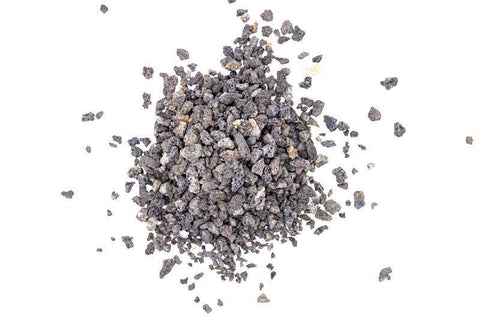
Black crushed lava gravel from Buce Plant
One advantage of having gravel in the aquarium is that it allows for live aquatic plants to be planted into it (with the addition of root tabs.) While gravel is not the best substrate for a fully planted tank because it does not provide minerals to help plant growth, it can help anchor the plants down and is not too dense for roots to spread throughout the bottom of the aquarium.
Gravel is inert, meaning it does not change the water parameters of the aquarium it is in. Some hobbyists prefer this because they want their parameters to remain the same.
Gravel will most likely not get kicked up in aquariums with strong flow or sucked up by siphons during maintenance because of its weight and size. However, because of the size of gravel, there exists spaces between the stones where debris can fall into. Fish waste and uneaten food tend to get trapped in gravel, so it is important to vacuum this type of substrate during routine water changes.

Sand
Sand is a much finer and softer version of gravel. It is made up of tiny particles of rocks, shells, and other earthly materials. Since the granules are so tiny, sand makes the ideal substrate for bottom-feeding fish or fish with soft bellies. The extra fine particles feel much softer compared to other substrates.
While it doesn’t come in as great of a variety as gravel, there is still a wide selection of colors and sizes to choose from. Common colors include white, black, and light brown. If you’re looking to give your aquarium a more naturalistic essence, Buce Plant offers a beige toned natural sand in two different granule sizes.

Since sand is very fine, it compacts together so tightly that the debris from the aquarium stays on top of the sand. This makes it easy to clean: simply hover a siphon over the debris and it’ll be taken care of.
However, sand is light enough to get sucked up into the siphon along with the detritus, so use extra caution when siphoning to avoid removing too much sand from the tank. You may have to add in more sand after every water change to fill in some bald spots.
Furthermore, sand can occasionally get kicked up into the water and proceed to get sucked into filters and pumps, potentially damaging the equipment. Make sure to fill the tank carefully during water changes. Too strong of an impact from water being poured into the aquarium can make a mess of the tank and leave sand flying everywhere in the water.
The density of sand can create a problem for those that want to keep live plants. Sand is usually so compact that plant roots have difficulty growing and spreading out. Like gravel, sand also does not provide nutrients for the plants. Even with the addition of root tabs, it is not the best option for a planted aquarium.
Its compactness is also said to lead to anaerobic areas being formed underwater because there is little to no flow going through the particles, and therefore no oxygen exchange. These areas can be a home for bacteria that reverse the nitrogen cycle, converting nitrates back into ammonia. Fish-keepers want to avoid this because ammonia is toxic to fish.
- Ways to combat this potential issue are to have a thinner layer of sand, have bottom-feeding fish to regularly sift through the sand, or to manually sift the sand yourself during maintenance.
Soil
Aquarium soil, such as UNS Controsoil or Aquario NEO Soil, is typically a clay-based substrate full of nutrients that excel plant growth. It is the best substrate for aquarium plants and a must-have for a high-tech planted tank. Plants that feed predominantly through their roots will thrive when they are planted in aquarium soil.
Unlike other substrates, soil does not have much variation and usually comes in only a few sizes and colors. The sizes of the granules are generally large enough for water to be able to flow through, so it adds a lot more surface area for beneficial bacteria to grow on.
- Hint: It is recommended to keep at least 1.5in (~4cm) of soil at the bottom of the aquarium for optimal root growth.
Aquarium soil is an active substrate. This means that it contains properties that alter the water chemistry of the tank. The substrate typically lowers the PH of the water, keeping it below 7, and makes the water softer. This creates an ideal range of parameters for most tropical fish and shrimp, which makes it possible for some hobbyists to keep sensitive strains of shrimp.
However, this would not be good for live-bearers like guppies because these fish need more minerals in their water. A solution to this issue is to manually add minerals into the water during water changes, or to add another substrate like crushed coral which slowly releases minerals into the water over time.
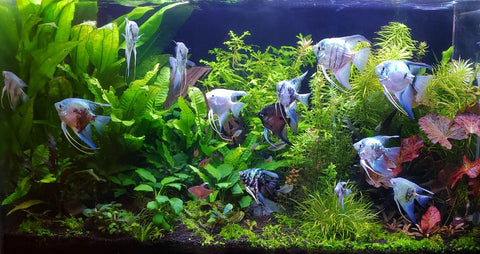
Buce Plant offers UNS Controsoil which does not leech ammonia after being added and is known to be less messy than other aquarium soils. Although, keep in mind that some aquarium soils can initially release ammonia into the water after being added. This can be an issue in newly set up tanks because it can lead to ammonia spikes, which is not only harmful to the livestock in the aquarium, it is also a big factor for the growth of algae. These plant-like organisms are unsightly, and most aquarists try to avoid having it in their aquariums at all costs. Learn more about algae in the planted aquarium by clicking here.
After a while, aquarium soil becomes depleted of its nutrients. It is recommended to add root tabs into the soil after a year or two to rejuvenate it.
Best of All Worlds
Fortunately, there is no rule stating you have to pick only one substrate for a tank!
In the world of aquascaping, it is very common to implement multiple substrates into an aquarium. For example, if you want to add sand to give your tank a bright and clean look, but you also want the aquarium to be heavily planted, then you can get both soil and sand. By placing the soil in the back and sand in the foreground, you can place the live plants into the aquarium soil so they can grow in a nutrient-rich substrate. Meanwhile, the sand will be more visible at the front of the tank.
It is recommended to use rocks or other forms of decoration between each substrate as a barrier to prevent them from mixing together over time. Many aquascapers add onto this method by placing some gravel around the rocks to create the illusion of depth, so they use all three of the main types of substrates.

Designing the layout of an aquarium is like a work of art, there’s no one way to do it. You can be as creative as you want, as long you are able to get the necessary materials. Luckily, online retail stores like Buce Plant exist to give fish-keepers access to a multitude of live plants and hardscape material. Now with the basic knowledge of substrates, you may proceed through the hobby with confidence! Happy scaping!
Tell us - Was this article helpful? Please leave a comment below!
If you have any questions regarding this article, please DM us on Instagram, Facebook, or email support@buceplant.com so we can assist you - @buceplant







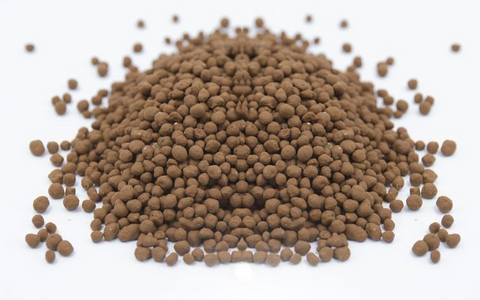

Comments
Leave a comment